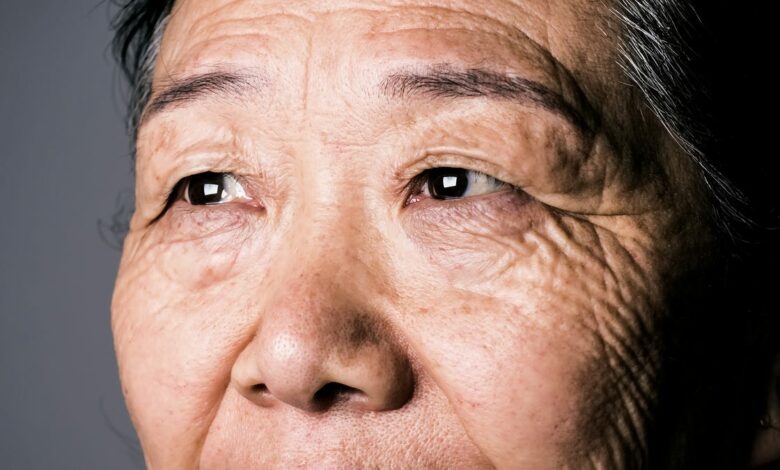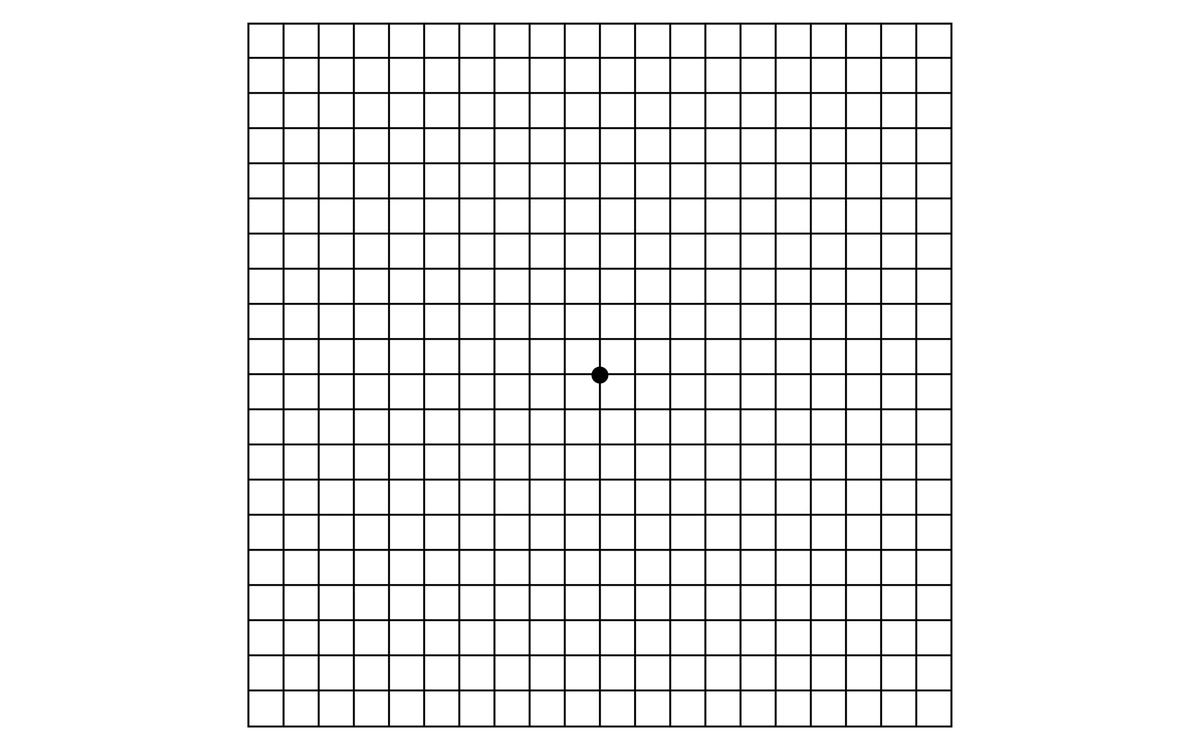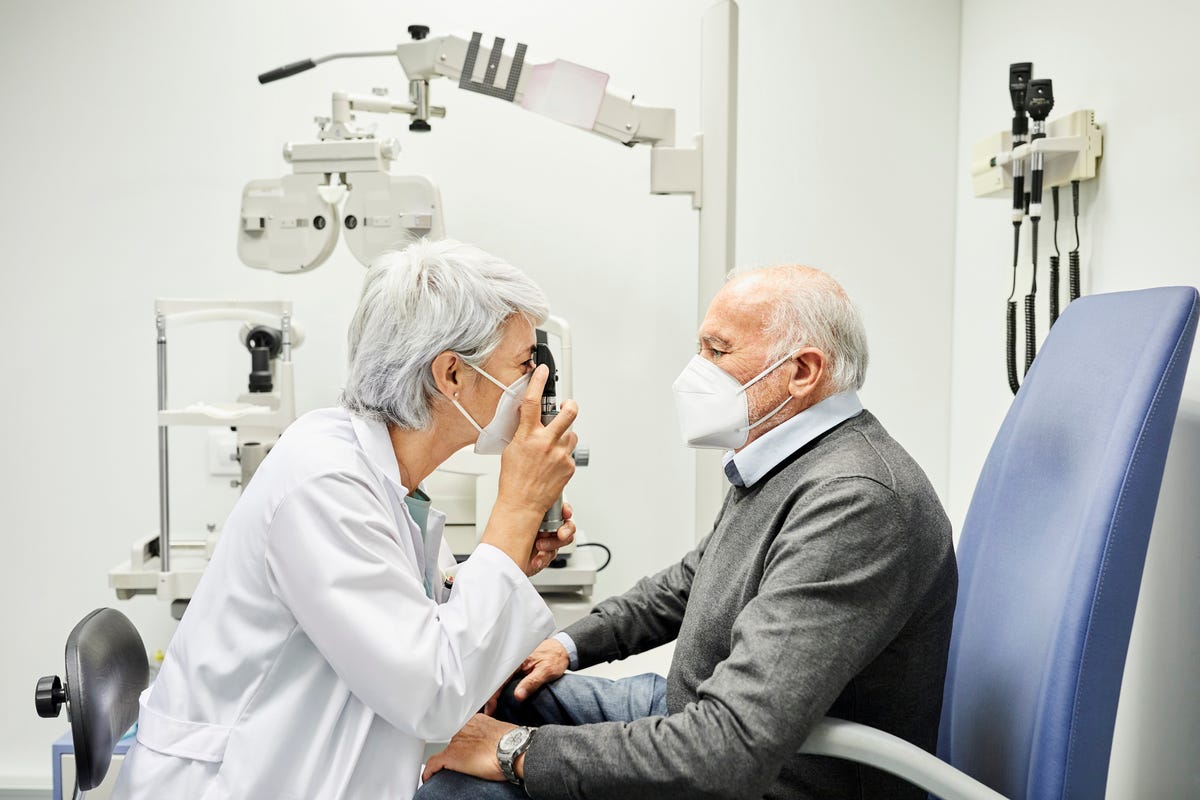Aging Eyes? 6 Common Eye Conditions and How to Protect Your Vision as You Age



Your eyes are aging. Whether you stare at a screen for work or spend the summer in the sun, your daily activities take their toll on your vision and eye health.
Aging vision means changes in your vision, and usually not for the better. As the years go by, it is common to have trouble seeing things up close, distinguishing colors, and more.
Many of the problems you may encounter with aging eyes stem from specific conditions. Here are six to watch out for. This is by no means an exhaustive list of all the eye conditions that can arise from aging vision, but it’s a good place to start.
Presbyopia
That’s a fancy way of calling age-related farsightedness. If you find yourself squinting at menus or turning up the brightness to try to read text on your phone, you may have presbyopia.
And you’re not alone. After 40, almost every person will address some level of aging of vision caused by presbyopia, according to the Mayo Clinic. Fortunately, you have plenty of options to correct this nearsightedness, from glasses and contact lenses to surgical solutions. Talk to your eye doctor. He or she can recommend a treatment that will help you see clearly, even with aging eyes.
Age-related macular degeneration
Age-related macular degeneration affects your central vision, but leaves your peripheral vision unchanged. an important cause of vision problems, including vision loss, in people over 50, according to the American Academy of Ophthalmology. You get AMD when your macula, a key part of your retina, changes.
Most people get dry AMD, which causes you to slowly lose your central vision. You can check for this problem at home by looking at an Amsler grid once daily. If you notice any vision problems while looking at the grid, contact your eye doctor as soon as possible. Adjusting your diet and taking supplements may help slow the progression of AMD.

Dry eyes
People of all ages suffer from dry eyes, but this is a common problem with aging eyes. Why? Because your body naturally produces fewer tears as you get older. By the time you are 65, you will probably suffer from dry eyes.
This condition doesn’t just cause redness, stinging, and other discomfort. It can also blur your vision. Fortunately, many people find relief with over-the-counter artificial tears (look for preservative-free options). And if those don’t work, you can explore ways to keep more tears in your eyes, such as punctal plugs.
Glaucoma
Glaucoma is the name eye health professionals use for a group of conditions that cause vision problems — including blindness — because of damage to your optic nerve. This nerve, located at the back of your eye, plays a major role in making your vision possible. Different types of glaucoma work differently, but they all cause damage by putting too much pressure on the optic nerve.
The most common type of glaucoma is open-angle glaucoma. It usually doesn’t cause any symptoms at first, but it creeps in over time and slowly damages your peripheral vision. If you don’t take steps to relieve the pressure in your eye and protect your optic nerve, it can eventually lead to total blindness.
The most important thing to know about this aging vision problem: The vision loss it causes can’t be reversed. Instead, treatment for glaucoma focuses on preventing further vision loss. Have your eye doctor monitor this condition during your routine eye exams. If they catch and treat it early, you should be able to avoid serious vision problems.

Cataract
This is one of the most common problems with aging eyes. The National Eye Institute reports that more than half of Americans over 80 either have cataracts or have had them removed.
You develop cataracts because the proteins in the lens of your eye start to break down and clump together. Over time, this causes the cloudiness you probably think of when you picture a cataract. The cataract causes your vision to become blurry, colors to appear duller, and your ability to see at night to decrease.
Treatment for cataracts depends on the extent to which the condition affects your aging eyes. Early on, adjustments such as using brighter lights at home and changing your glasses or contact lens prescriptions can help. Ultimately, however, many people opt for surgery to remove the cataract.
Other changes in sight
We’ve just covered five of the most common problems for aging eyes. But apart from specific conditions, aging can also lead to other changes in vision. According to the National Institute on AgingIt is normal to experience problems with your vision, such as difficulty distinguishing colors and taking longer to adjust to changes in the amount of light.
You could Do you notice that you are more sensitive to glare or that you need more light for specific tasks?says the American Optometric Association. If you notice any changes in your vision, that’s a sign to get an eye exam. In many cases, your eye doctor can provide treatment to correct whatever is changing in your eyes.
How to Protect Your Eyes
Aging eyes can cause problems over time, but you don’t have to sit passively and wait for problems to arise.
If you’re looking for ways to take care of your eyes on a daily basis, we’ve got a few tips to get you started. You can also adjust your diet to include more eye-healthy foods and your lifestyle: always wear sunglasses with UV protection when you go outside.
In addition, it helps to have regular eye exams to prevent vision problems. A good ophthalmologist can evaluate your eyes and detect problems early, when they are easiest to treat.




